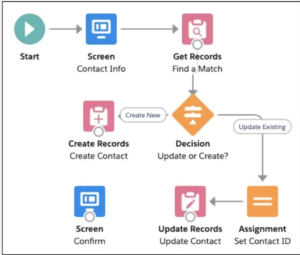4 Salesforce Order Management Features to Use in 2022
Regardless of the size of your business, the case for implementing tools like Salesforce – and its Order Management system in particular – has probably never been stronger than it is today.
In the guide below, we’ll get you started on a powerful Salesforce service that should feature in any implementation strategy– Order Management. Properly configured, Order Management can improve overall SFCC integration for your business, independently or in consultation with our managed services.
Why Order Management Belongs in Your Salesforce Toolkit
Simply knowing the state of the market won’t suffice to guide your company to the right Salesforce implementation. To navigate the shifting landscape of new service platforms in the Salesforce Commerce Cloud (SFCC), you’ll need to know how to map particular platforms onto your specific business needs.
Here’s why implementing Salesforce Order Management is important:
- Global revenues from Customer Relationship Management (CRM) services have nearly doubled in the last five years.
- Salesforce dominates this revenue explosion with an unrivaled 33% of the market share.
- Having surpassed more than a billion users, Salesforce Commerce Cloud continues to set the standard for e-commerce customer service.
- With the acquisition of Slack in July of last year, Salesforce has demonstrated its commitment to staying ahead of recent mobility trends in customer and buyer communications.
Despite the proven benefits of tailored CRM, nearly half of Salesforce implementations never deliver trackable results in increased sales. While common points of failure tend to trace back to incoherent strategies and inevitable gaps between adoption and practice, these same explanations predictably pop up wherever software implementation fails.
An informed Salesforce strategy will take into account dynamics specific to customer relations.
From startups to Fortune 500, companies who integrate SFCC services into their customer relations need to enable their sales teams and service representatives to maintain the seamless, intuitive experience customers have come to expect from 1-click purchasing. Without a central point of contact for all the various moving parts of order fulfillment, your SFCC integration won’t live up to its potential.
Salesforce Order Management provides exactly this solution.
Built into the Salesforce platform, Order Management establishes a central hub for inventory, fulfillment, and service workflows. In order to get the most out of your Order Management integration, you need to understand its features and the problems it is designed to solve.
What Order Management Should be Doing for Your Business
Regardless of the details of your implementation, you should take advantage of these 4 core Order Management features to keep your workflows moving end-to-end.
1. Automate Fulfillment Processes with Flow Builder
Although the customer purchase experience in ecommerce has largely been reduced to a single click, the behind-the-scenes process has only increased in complexity as vendors manage an expanding array of fulfillment options.
As staged choices increase in the fulfillment process, so do the chances for human error. Without automated verification steps, every point of data entry in your order management process represents a 4% chance of error. Factor in the combined steps across separate operations departments – that include inventory, warehousing, receiving, packing, shipping, and returns at a minimum – and you have a compound rate of error you cannot afford to ignore.
Based in drag-and-drop interaction, Order Management’s Flow Builder feature outfits you with an intuitive tool for designing automated workflows to minimize chances for error. Out of the box, Flow Builder includes a variety of useful templates for common processes including:
- Payment Processing
- Returns
- Cancelations
- Questionnaires
- Media Campaigns
As you map Order Management onto your company’s specific process, Flow Builder will help you balance customization against reinventing the wheel.
- Get Everything on One Screen in the Order Management Console
Across industries, employees spend on average more than 9 hours a week simply searching for information that they already have but cannot locate efficiently.
In effect, the typical full-time employee takes one day off each week just to collect scattered data.
In order to effectively implement your customized workflows, your sales teams need to have more than just access to information spread across traditionally siloed systems. They need to have it consolidated in one place, on one screen.
The Order Management Console tackles this problem head-on. On the console’s primary Order Summary page users can quickly cross-reference an exhaustive catalogue of order information such as:
- Primary and Support Records
- Totals including Adjustments, Shipping, and Taxes
- Actions and Recommendations
- Related List Quick Links
For all records, the split view option allows a user to search record databases without closing those already open in the Workspace. Combined with the ability to toggle Subtabs for shipping and payment details, these features of the Order Management Console can significantly reduce your time loss in information searches.
You can watch Commerce Cloud Product Management Director Amanda Hatker illustrate the lifecycle of an order in the Order Management console below.
https://www.youtube.com/watch?v=0gdmFr20LD8
- Integrate SFCC with Salesforce Service Cloud
More than 90% of the time, the customer service experience your business provides will directly influence the chance that customers will do business with you again. To make the most of each opportunity, businesses need to link commerce and service experiences as seamlessly as possible.
As it natively integrates SFCC with Salesforce Service Cloud (SFSC), Order Management can help you close this gap. Once these platforms share live information, your customer support teams will see all Commerce Cloud order data on their Service Cloud dashboards, enabling them to resolve issues more efficiently.
- Maximize International Compatibility
International online marketplaces now make up more than 60% of online sales. For retailers of all sizes, this trend has dramatically lowered the entry barrier to international ecommerce.
As ecommerce businesses looking to expand internationally no longer need to build their own platforms, the most common remaining obstacles have to do with accommodating differences of language, tax codes, tariffs, or currencies.
Prior to the launch of Order Management, international retailers relied on third-party extensions – called Salesforce cartridges – to integrate SFCC with their order management systems. Now with Salesforce Order Management, you can find built-in support for 35 different languages and various tax and currency conversions.
Let Rainmaker Fine-Tune Your Order Management Implementation
Salesforce services like Order Management can break down the traditional partitions of information that often hinder workflows in companies of all sizes. But tailoring those services to your specific needs requires expertise and a long resume of experience. You can find both by partnering with Rainmaker.
To learn more about Salesforce Managed Services with Rainmaker, contact us here.








